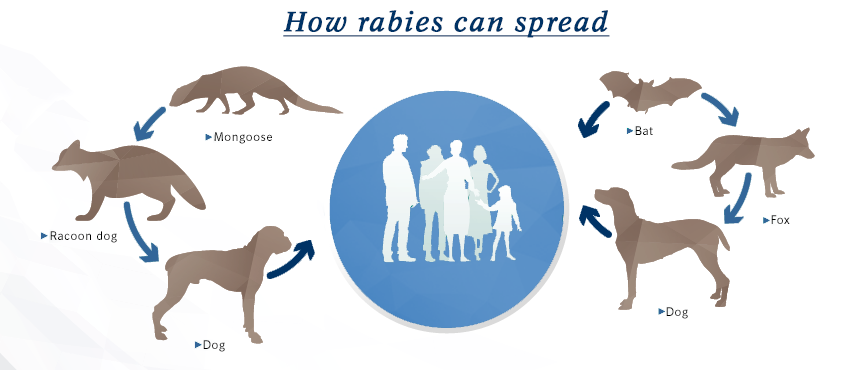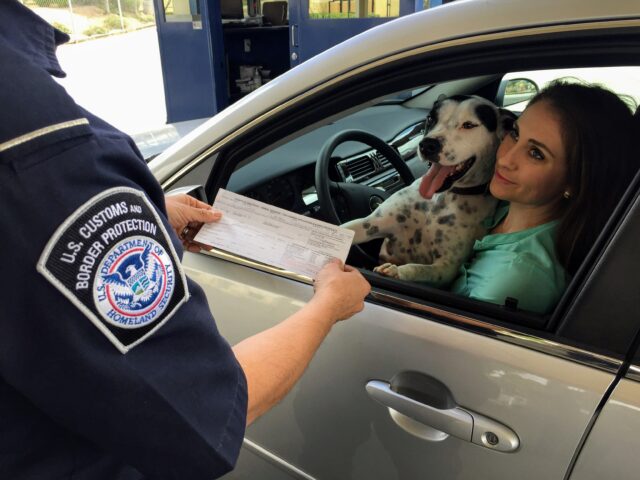Rabies in dogs is one of the most studied and preventable diseases on the planet. Sadly, it is still a common threat and common threat for many countries.
Let us have a quick review of all the things you need to know about rabies, plus the things you should do if your dog gets infected.


1. What is rabies?
According to the World Health Organization (WHO), rabies is a viral zoonotic disease that can spread to people and pets. It causes progressive and fatal inflammation of the brain and spinal cord in mammals, including humans. There are two forms of this disease: furious rabies (hyperactivity and hallucinations) and paralytic rabies (paralysis and coma). Rabies is potentially fatal but avoidable. There are various vaccines, medicines, and technologies that have long been available to prevent death from rabies.
2. What is the impact of rabies?
Rabies kills tens of thousands of people each year. Experts say it is the cause of around 59,000 human deaths annually in over 150 countries, with 95% of cases occurring in Africa and Asia. These figures are likely gross underestimations due to underreporting and uncertain estimates. The disease usually affects rural poor populations, with approximately half of the cases being children under 15 years of age.
3. How is rabies transmitted?
The rabies virus is introduced into a muscle through a bite from another animal. This process can last approximately 3-12 weeks. The animal has no signs of illness during this time. It then travels to the brain by moving within nerves. When it reaches the brain, the virus multiplies rapidly and passes to the salivary glands. The animal begins to show signs of the disease within 3 to 5 days. The infected animal usually dies within 7 days of becoming sick.
4. What are the symptoms of rabies?
Early symptoms can include fever with muscle pain plus unusual tingling, pricking, or burning sensation on the wound. The incubation period is typically 2–3 months. Furious rabies causes hyperactivity, excitable behavior, fear of water, and sometimes fear of drafts or fresh air. Death occurs after a few days due to cardio-respiratory arrest. Paralytic rabies (20% of the total number of human cases) is less dramatic and usually longer course than the furious form. The muscles gradually become paralyzed which progresses into a coma and then death eventually occurs.
5. How is rabies diagnosed?
In animals, a diagnosis can be made by collecting tissue from the brainstem and cerebellum. This test requires the animal to be euthanized. In the United States, approximately 120,000 animals or more are tested for rabies annually. Only 6% of those are found to be rabid, and most of them are wild animals. Only a small percentage comes from domesticated ones.


In humans, tests are performed on saliva, serum, spinal fluid, and skin biopsies of hair follicles. Saliva can be tested by virus isolation or reverse transcription followed by an RT-PCR test. Serum and spinal fluid are tested for antibodies. Skin biopsy specimens are examined for rabies antigen in the cutaneous nerves at the base of hair follicles.


6. What to do if you or your dog have been exposed to rabies
Vaccinating dogs is the most cost-effective way to prevent rabies in people. Likewise, human rabies vaccines exist for pre-exposure immunization.
- For dogs with up-to-date vaccinations/ overdue booster shots:
Dogs that are currently vaccinated with a USDA-licensed rabies vaccine should be revaccinated immediately, kept under the owner’s control, and observed for 45 days. If they develop signs suggestive of rabies, it should be euthanized by an animal health professional and its head submitted to a diagnostic laboratory for testing.
- For dogs that have never been vaccinated against rabies
Dogs that have never been vaccinated should be euthanized immediately by animal health professionals. The vaccine alone will not reliably prevent the disease in previously unvaccinated animals.
If the owner is unwilling to have the animal euthanized, the pet should be placed in strict quarantine for 4 months. A rabies vaccine should be administered at the time of entry into quarantine. Every effort should be made to vaccinate the animal within 96 hours of exposure.
- If you are bitten or scratched by a dog suspected of rabies:
- Wash the wound immediately with soap or detergent
- Flush the wound for about 15 minutes with copious amounts of water
- Apply antiviral medication to the wound 15 minutes after it has been washed and flushed
- Avoid applying irritants to the wounds such as chili powder, plant juices, acids, and alkalis
- Avoid covering the wound with dressings or bandages
- Go to a health care facility for further assessment and treatment by a healthcare professional
If possible, confine the biting animal and collect information on it and the bite circumstance to provide to the health care professional and public health officer. Keep the biting animal confined and under observation for 10 days.
7. Can rabies be prevented?
Rabies is 100% preventable with the right vaccination and awareness programs.
- Rabies can be prevented through mass vaccination of animal populations
- Prevention and treatment of humans via vaccination and anti-rabies immunoglobulin administration.
- Education of communities about rabies and the ways to prevent it
8. How serious is rabies today?
The Global Alliance for Rabies Control estimates an enormous global economic burden, reaching 8.6 billion USD per year. The vast majority is shouldered by Africa and Asia where dog vaccination is not widely implemented and access to healthcare in these regions is severely limited. In many developed countries, like the U.S., the movement of animals from other areas means that rabies remains a constant threat.
9. What can we do to prevent rabies?
- Don’t try to separate two dogs fighting
- Wear gloves if you handle your pet after a fight
- Keep family pets indoors at night
- Don’t attract wild animals to your home or yard
- Dispose of birdseed or other foods that may attract wild animals
- Feed pets indoors
- Tightly cap or put away garbage cans
- Board up any openings to your attic, basement, porch, or garage.
- Cap your chimney with screens.
- Encourage children to immediately report animal bites
- Tell children not to touch any animal they do not know
- If a wild animal is on your property, contact wildlife control services
Report all animal bites or contact with wild animals to your local health department. Don’t let any animal that has possibly exposed someone to rabies escape. For more information, contact your local health department.
10. Rabies prevention requires a global community effort
There is a strong will to fight against rabies and efficient vaccines are available, rabies prevention, and control require a sustainable effort. Join vets, owners, and major health organizations on World Rabies Day to increase awareness and to fight rabies in dogs globally.



